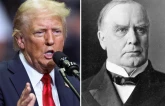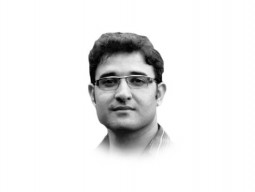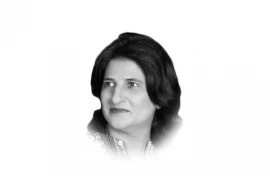
On January 12, the Hindu nationalist Bharatiya Janata Party’s (BJP) youth wing flagged off what they called the ‘ekta yatra’ — a march for unity.
The plan was to converge on Lal Chowk in Srinagar, the arson-prone heart of Kashmir, from all over the country, to hoist the Indian tricolour on Republic Day. Assert a fundamental right, remind the fellow in the firan where it’s at, and so on. Alas, the plan lacked idiot-proofing from conception to execution.
A bunch of merry right-wing youth from Karnataka in the south, boarded a train bound for Kashmir. But sometime after midnight, when the train had barely gotten a fifth of the way there, the poor boys fell asleep, dreaming dreams of national unity.
Alert security forces grabbed their chance. At a station in Maharashtra, they detached the bogeys containing the future flag-hoisters from the mother train. They then attached the bogeys to a train headed back to Bangalore, where the volunteers had breakfast.
While the rest of us laughed our heads off, spokesmen for the BJP objected in the strongest possible terms: “Our workers had valid tickets!”
There is a sense of deja vu about these events. In late 1991, a year before they demolished the Babri Masjid in Ayodhya, the BJP undertook almost the exact same march. The then president of the party, Murli Manohar Joshi, led the marchers.
Landslides (and a not a little Kashmiri outrage) prevented Joshi’s followers from reaching the spot. Joshi himself had to be flown in, amid what witnesses called the tightest security they had seen. Sympathetic commentators put the number of people getting to Lal Chowk at 40, including journalists. Curfew had been imposed on the town and announcements made that Lal Chowk had been handed over to the army.
There are varying reports of how the actual hoisting took place on January 26, 1992.
It is clear that security personnel helped Joshi with the flag, but when he was raising it to the pedestal of the clock tower on which it was supposed to fly, the rod broke and knocked the old man on the head. It has been reported that the flag was finally hoisted on a lamppost. Having raised the flag, a slightly dizzy Joshi left the scene and went off to plot the razing of a mosque.
Leading the marchers this time is a fellow called Anurag Thakur, MP, and the son of the chief minister of Himachal Pradesh. An official website lists his professions as “cricketer” and “industrialist”. Though what he really does is run an export house and make sure, with a little help from papa, that he’s in control of all cricket administration in his home state.
His own webpage has a picture of a cricket team with a trophy in front, he sits in the middle with a blue jacket, the boys are in white. The header reads: “If he can do this in sports, he can do better in politics. There is a need to bring young talent to the forefronts (sic) of politics.”
By the standards of Indian politics, this chap should visit the pediatrician if he catches a cold during his march, but at 36, he’s been pushed to the forefront all right.
Now all he has to do is find a suitable lamppost, and not injure himself, or cause injury to others. In Shyambazar, where it all began, Republic Day represents a peaceful holiday. That I have from the horse’s mouth.
Published in The Express Tribune, January 27th, 2011.




1723807223-0/jimin-(1)1723807223-0-165x106.webp)








COMMENTS (1)
Comments are moderated and generally will be posted if they are on-topic and not abusive.
For more information, please see our Comments FAQ